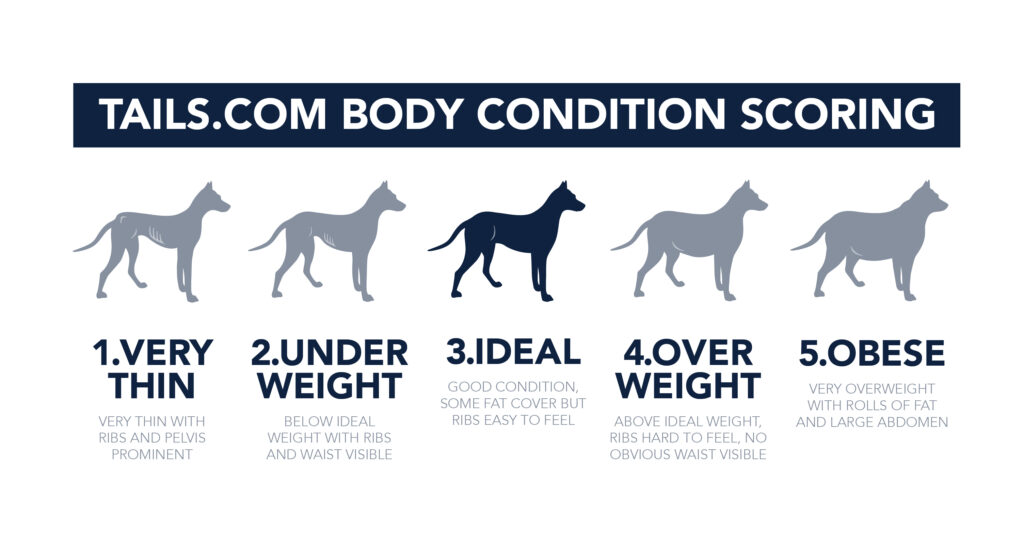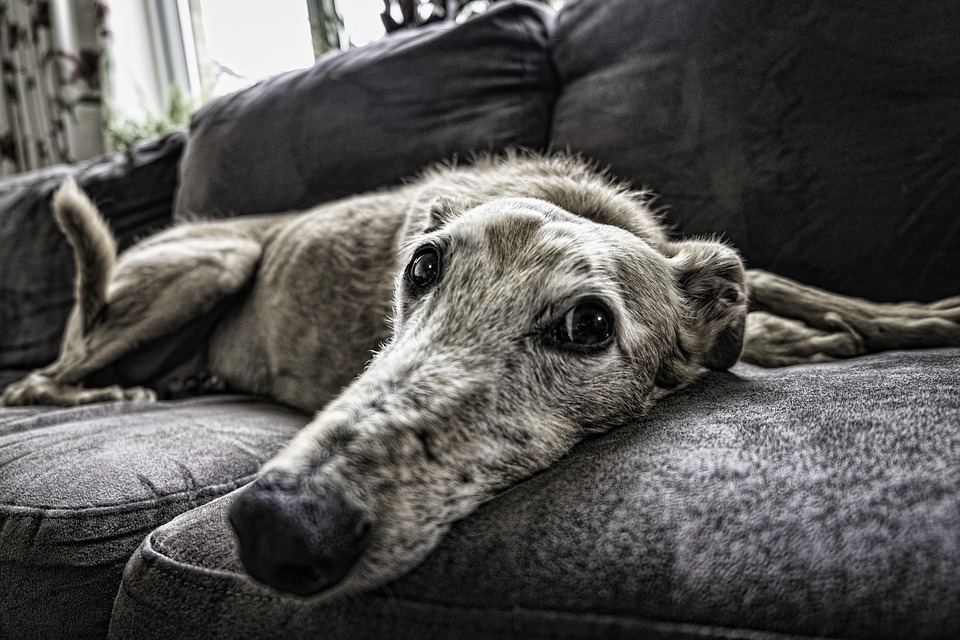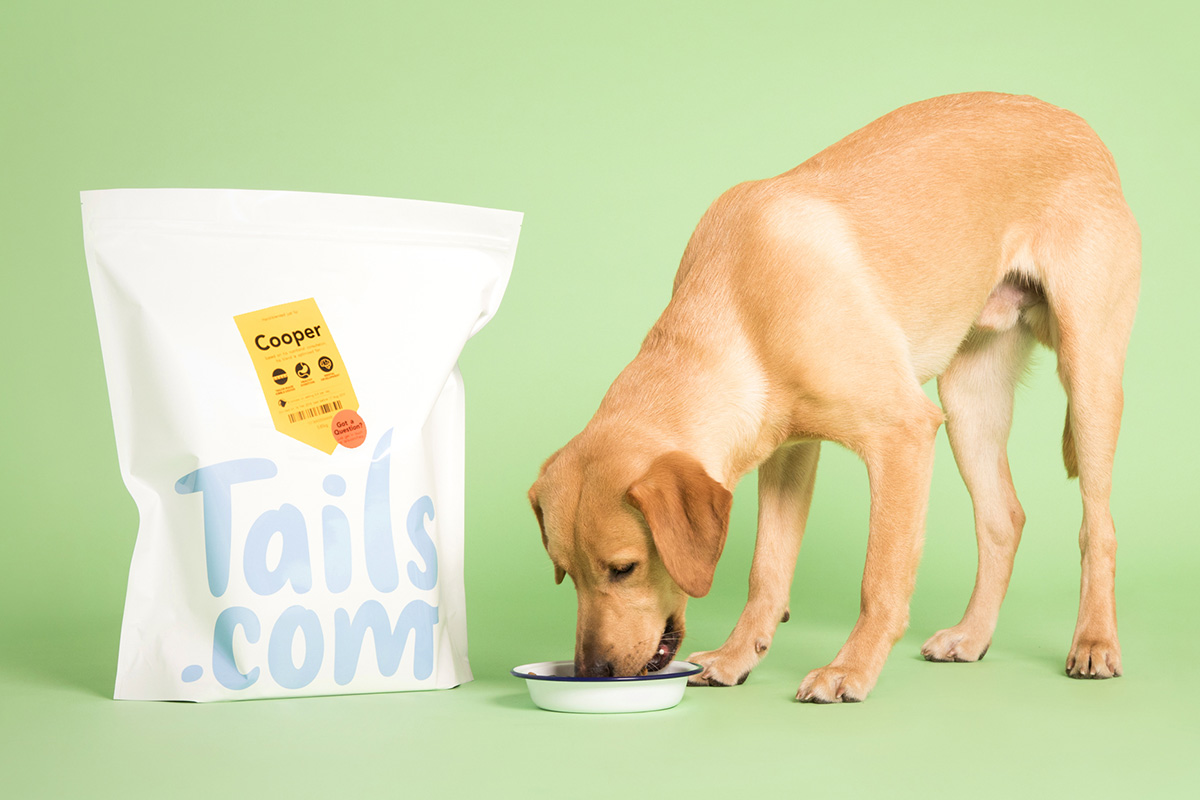It’s important to keep your dog at a healthy weight – this will mean they’re happier and healthier in the long run – but sometimes it can be tough! Food-motivated dogs can quickly pile on the pounds, while fussy eaters can sometimes be leaner than they should be. And as dog obesity rises, it’s important we get our dog’s weight under control. So here’s our top tips for keeping your dog at a healthy weight – from puppyhood to their senior years!
Why is dog weight management important?
A recent study from the University of Liverpool and Mars Petcare’s Waltham Centre for Pet Nutrition, revealed the lifespan for overweight dogs is 2.5 years shorter than dogs with a healthy body weight. That’s because dogs with extra weight can have more health problems later in life.
Excess weight puts pressure on the joints which can lead to arthritis, a painful degenerative joint condition. Overweight dogs can also experience mobility issues. And since they can’t get around as easily as they used to, their quality and enjoyment of life can suffer. Weight gain can also cause heart disease and breathing problems in dogs, which can be fatal if left untreated.
Too much weight can predispose dogs to a whole host of other issues like diabetes, certain cancers, kidney disease, bladder stones and pancreatitis. Pups that are overweight when young are more likely to become overweight adults. And just like humans, shifting the weight in later years can be that much harder.
Dogs at a healthy weight are much less likely to suffer from these health conditions and complications in later years. Which is why it’s important to get weight management under control to ensure your pooch lives a long and healthy life.
How to tell if your dog is a healthy weight

All breeds have a healthy weight range and you can check if your dog is overweight simply by reading the number on the scales. But vets also have a body condition score (BCS) test they use to check if your dog is ideal, over or underweight.
It’s based on a 9-point scale (some vets use a 5-point scale) and assesses 3 key areas – your pup’s ribs, tummy and waist. The vet will run their hands over your dog’s body, paying attention to the key areas to give your dog their score.
In the ideal range, you should be able to feel your dog’s ribs through a slight fat covering. Every breed of dog should have a visible waist when viewed overhead, but it shouldn’t be too prominent. And your dog’s tummy should tuck up from the ribs towards the groin when viewed side on and not hang down to the floor.
You should check your dog’s weight regularly to ensure they stay in the ideal range. Either use your scales at home or pop them into the vet for a quick check up. Your vet team are there to offer support and advice if your dog needs to lose weight.
Breeds prone to weight gain
Some breeds are typically more prone to being overweight than others. And sometimes it’s not just a case of a greedy pooch! About a quarter of Labradors have a mutation of a gene called pro-opiomelanocortin (POMC) which controls appetite, meaning they can still feel hungry even after eating a big meal.
With breeds prone to being overweight, it’s important to pay closer attention to your dog’s diet and find the right nutrients and quantities to help them maintain their ideal weight. A few breeds prone to obesity include:
- Beagle
- Shih Tzu
- Cocker Spaniel
- Yorkshire Terrier
- Bulldog
- Pug
- Boxer
- Dachshund
- Rottweiler
- Chihuahua
- German Shepherd
- Basset Hound
What is the best diet for your dog?
There are a few important factors you should always bear in mind when choosing your dog’s diet.
- Choose a recipe with the right protein, fat and fibre ratio for your dog’s needs
- Tailor food to your dog’s individual needs
- Offer the right portion
All dogs are different and have different needs, which is why it’s important to get the right balance of protein to build muscles, carbohydrates and fibre to feel fuller for longer and support better bowel movements. This is the key to helping your dog achieve and maintain a healthy weight.
Although diet is an important driver of healthy weight management, let’s not forget it’s only effective when used alongside the right levels of exercise. Some breeds of dogs require a lot of short, intense workouts, while others need less frequent but longer sessions. Make sure you know the breed requirements and adjust your dog’s daily exercise according to their age to compliment the food for a healthy life.
What to do if your dog is losing weight
The most common reason dogs lose weight is not getting enough food. Sometimes dogs can become less interested in eating their food. Which means they eat a lot less and lose weight. If your dog has gone off their food, it may be time to introduce a new variety to keep them excited about meal times.
Related blog: Will my dog get bored of eating the same food everyday.
You could also be unknowingly feeding less food than your dog actually needs. If that’s the case, be sure to check the feeding guidelines and give the right amount for your dog’s size. Get into good feeding habits to help your dog put the weight on by doing things like adding more food to your dog’s bowl each meal time or feeding an extra meal a day. You could also offer a higher calorie food to help them put on that extra weight.
It’s also important to note that some dogs can become less interested in their food during the hot summer months. Then when the cooler period hits their appetite increases. In these cases it’s important to give your pup plenty of water and monitor their condition to make sure they’re not lethargic or withdrawn. If you notice any behaviour changes, head straight to your vet.
Pets are like humans and have days when they simply don’t feel hungry. On those occasions it doesn’t mean your dog is not enjoying their food, it could simply be a sign they’re tired, under the weather or full from the day before. As long as it’s not too frequent and doesn’t lead to weight loss, there’s no need to worry.
If your dog starts losing weight unexpectedly, they’re having ongoing digestive issues, or they’re still not gaining weight after you’ve tried the above, it’s important to get them checked over by a vet. If they’re still eating normally, there may be a medical reason why your dog might be losing weight. Intestinal worms are a common cause for sudden weight loss in dogs, as well as digestive issues like inflammatory bowel disease and malabsorption. If your dog eats normally but they’re still losing weight, always see your vet to check for hidden problems.
What to do if your dog is gaining weight
If your dog is gaining weight, it’s likely your dog is getting more calories than needed and not enough exercise. The extra calories can come from the amount of food they’re getting at meal times, or that sneaky treat or two we can’t help but share. In which case you may need to cut out their daily treats altogether, or reduce the portions of their regular food. The key to successful weight management is being mindful of everything you feed your dog each day.
Treats should only make up 10% of your dog’s daily intake. Any more than that and it’s not only more calories they’re getting, you risk unbalancing their diet and causing other problems to their health. For example, a dental chew is already about 10% for most dogs.
But there could be a medical cause for your dog’s weight gain too. Hormonal disorders like hypothyroidism slow a dog’s metabolism down so they’re no longer burning calories as quickly as they should. Cushing’s disease and other metabolic conditions can also cause weight gain. if your dog is not losing weight or is still gaining despite diet changes, always share your concerns with the vet.
Weight management for puppies
Puppies go through rapid growth spurts which means their calorie needs can change over time. Which is why regular weigh-ins are so important during this stage. For very young pups that are less than 4 months old, you should try to get them weighed every 2 weeks as they’re growing so rapidly. For older pups, monthly weigh-ins are a good rule of thumb. Since they grow so quickly it’s essential we feed our pups the right ingredients in the right quantities so they grow into a happy and healthy adult dog.
If a puppy carries excess weight, it can impact their bones as they grow. This can increase your pup’s risk of developing bone problems like hip dysplasia and arthritis as adults. Especially in larger breeds like Newfoundlands, Great Danes, Dobermans, Rottweilers, Saint Bernards and Mastiffs.
If your puppy is losing weight, you may simply need to give them more food at meal times. Very young puppies need to eat more often than adult dogs to support their growth, and will need 3-4 small meals a day. Unusual weight loss in puppies could signal a health problem that needs investigation by a vet.
But if you’re ever in doubt about your puppy’s diet or condition, always ask your vet for advice.
Weight management for senior dogs

It’s not uncommon for senior dogs to lose weight in their later years, especially for breeds like sight hounds. This is mainly due to muscle wastage as they tend to move around less than they used to.
Sometimes senior dogs have the opposite problem. They’re slowing down, and playing and moving less, so they tend to put on more weight. This can create a negative cycle where your dog moves less and needs fewer calories, but if we don’t adjust the quantities they gain more weight. Then when they put weight on they don’t want to move as much, so they burn fewer calories and therefore gain more weight – and the cycle continues. In which case it’s important to adapt your dog’s daily calorie allowance to account for the drop in exercise.
But it’s important to note that there are other reasons your dog could be slowing down. If it’s pain related that can be treated, which would allow your dog to be more active than they would otherwise. So slowing down shouldn’t be dismissed as ‘he’s just getting old.’ Always check if there’s an underlying cause.
Excess weight can be tough on an older dog’s joints, which can make stiffness and arthritic pain worse. Senior dogs still need regular, gentle exercise and this can be a great help to loosen stiff muscles and joints.
If you’re trying to help your senior dog lose weight and they always seem hungry, we provide higher fibre diets to keep them feeling full while controlling their calorie intake.


12 thoughts on “All about: dog weight management”